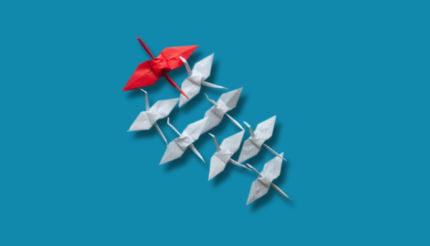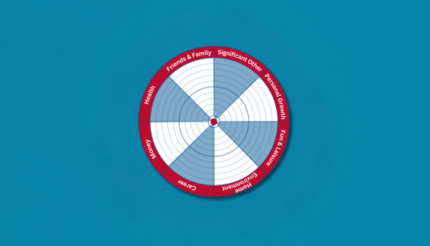 Improving your communication skills will benefit you in so many ways, not only making you a better salesperson, but also helping you improve several aspects of your work and personal life.
Improving your communication skills will benefit you in so many ways, not only making you a better salesperson, but also helping you improve several aspects of your work and personal life.
Brad Sugars, Chairman and Founder of ActionCOACH, says that true communication is based upon the response you receive. Whenever you send a message, pay attention to how people respond. This will enable you to communicate in a more effective manner.
To deliver the right message at the right time, you need to learn to read people and their behaviours. In this blog, we’ll explore two excellent tools to perfect this technique and how you can use them to win sales.
Communication in The Sales Scenario
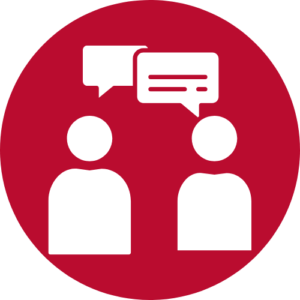
The adage “people buy from people” is still true in today’s sales scenario. By building rapport, you will create a relationship of trust based on understanding what matters to your customer, which will then drive more sales.
In other words, you have the challenging task of reducing the unconscious differences between you and your customer. You must find commonality and communicate in a way that resonates with them.
Building rapport requires the use of the correct behavioural techniques and profiling tools. This blog focusses on the DISC Profile Tool and the VAK Learning Model. These tools are used to profile people so that you can establish the best communication style with which to present your solution. Effective use of these tools will help customers make their buying decisions more quickly.
Let’s see how these tools can help you improve your communication skills and make you a successful salesperson.
Using the DISC Profile to Adjust Your Sales Strategy
The DISC Profile system breaks down human behaviour into four main personality styles:
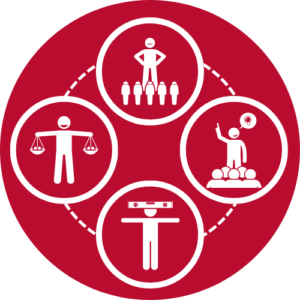
- Dominant
- Influential
- Stable
- Compliant
We all have components from each of the four categories, but one is more dominant and determines our behaviour and communication style. The DISC model is a powerful tool in the salesperson’s kit bag and will help you to understand your prospect and adjust your sales strategy to interact more effectively.
It’s a way to build relationships by understanding what matters to the customer and effectively communicating the value you bring, in order to close the sale.
Here are some helpful insights when profiling your prospect:
Dominant
![]() A dominant person likes to control the situation. They want to lead. They often like to own the latest things, and have the best ‘whatever’ available on the market. They are goal-orientated, decisive and competitive. They don’t want to waste time, nor are they looking to make a new friend and start hanging out with you! When selling to a person in this category, get straight to the point and present a crisp, one-page summary of information highlighting your best products and services.
A dominant person likes to control the situation. They want to lead. They often like to own the latest things, and have the best ‘whatever’ available on the market. They are goal-orientated, decisive and competitive. They don’t want to waste time, nor are they looking to make a new friend and start hanging out with you! When selling to a person in this category, get straight to the point and present a crisp, one-page summary of information highlighting your best products and services.
Make sure you suggest ‘the best of the best’ from your products and services. They’re also the most likely category to buy the biggest, newest or most expensive things you sell.
Influential
![]() People in this category are more likely to buy more popular items, so you need to support your solution with social recognition to seal the deal. They will want to see testimonials and will be particularly impressed by endorsements from influencers and celebrities. More people-orientated, they may collaborate with others in the decision-making process. Relationships are important to them as they like to know who they are buying from and why. They may well want you to become their friend, build rapport, and learn about your life before buying. With this sort of prospect, a good way in could be to take them to lunch, meet their colleagues, and listen to their stories … before you start the sales conversation.
People in this category are more likely to buy more popular items, so you need to support your solution with social recognition to seal the deal. They will want to see testimonials and will be particularly impressed by endorsements from influencers and celebrities. More people-orientated, they may collaborate with others in the decision-making process. Relationships are important to them as they like to know who they are buying from and why. They may well want you to become their friend, build rapport, and learn about your life before buying. With this sort of prospect, a good way in could be to take them to lunch, meet their colleagues, and listen to their stories … before you start the sales conversation.
Stable
![]() A person with a stable personality is more predictable. They like the security and consistency of products they have bought before, as they trust them already. They are likely to feel ‘brand loyalty’ and stick to what they know for as long as possible. People in this category value things like warranties, so blend this reassurance into your conversation, especially when proposing a new solution – make them feel comfortable that there is no big change happening
A person with a stable personality is more predictable. They like the security and consistency of products they have bought before, as they trust them already. They are likely to feel ‘brand loyalty’ and stick to what they know for as long as possible. People in this category value things like warranties, so blend this reassurance into your conversation, especially when proposing a new solution – make them feel comfortable that there is no big change happening
Compliant
![]() This personality style is conscientious, detail-oriented and values quality and accuracy. Before compliant prospects decide to buy, they spend time on research. So, before opening a sales discussion, provide the prospect with all the relevant information. Consider organising a meeting with a subject matter expert in your team to go through the logistics or the technical details and put them at ease.
This personality style is conscientious, detail-oriented and values quality and accuracy. Before compliant prospects decide to buy, they spend time on research. So, before opening a sales discussion, provide the prospect with all the relevant information. Consider organising a meeting with a subject matter expert in your team to go through the logistics or the technical details and put them at ease.
Identify your prospect’s best personality fit before engaging in a sales discussion. Are they outgoing (Dominant/Influential) or reserved (Stable/Compliant)? Or are they task-orientated (Dominant/Compliant) or people-oriented (Influential/Stable)?
Practise observing behaviour types. This technique will win you more sales as you adjust your communication style to suit the situation.
Personalise your Communication Using the VAK Model
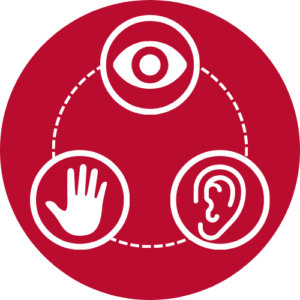 Once you have identified your prospect’s behaviour type, you can further enhance communication with the VAK Model.
Once you have identified your prospect’s behaviour type, you can further enhance communication with the VAK Model.
The Visual-Auditory-Kinaesthetic (VAK) learning style method divides people into three primary models of learning and communication:
-
-
-
-
- Visual
- Auditory
- Kinaesthetic
-
-
-
Reflect on previous emails, phone calls and meetings to find clues as to how your prospect processes information. Look for words such as “see” (visual learners), “chat” or “talk” (auditory learners), or “do” (kinaesthetic learners).
Visual learners can often be quite easy to recognise. They take care of their appearance, have decluttered desks and maintain eye contact with no visible effort.
Kinaesthetic learners are more about being comfortable. They are likely to look down when they need to remember things.
Auditory learners who communicate through sound are harder to recognise. Pay attention to how they communicate to spot the right clues.
A professional salesperson knows how to interact optimally with each customer to make a positive impact. Ideally, you can mix the DISC and VAK formulas to understand how people communicate, and you can become good at matching and mirroring. It is not about learning to mimic your prospects but the ability to create a synergy.
If you know how they think, it will be much easier to “speak their language.”
More Tips to Increase Your Conversion Rate
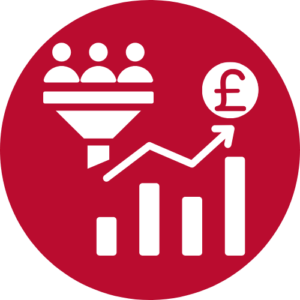 Sales is not just about selling a product or service and moving to the next sale. A successful sales professional is an expert at creating and maintaining relationships to increase conversion rates.
Sales is not just about selling a product or service and moving to the next sale. A successful sales professional is an expert at creating and maintaining relationships to increase conversion rates.
Here are some tips to improve your sales skills.
- Self-development. Dedicate time and effort to improve both your and your team’s sales competency.
- ‘Test and Measure’. Set goals and measure everything.
- Role play. Block out 10-15 minutes every morning to go through a sales scenario to improve sales techniques.
- Review. Record yourself having a sales conversation, then listen back to yourself and learn from your mistakes. Seek feedback from your colleagues for an alternative view.
- Research. ‘Do your homework.’ Look at the prospect’s company website, reviews, and press coverage to learn as much about the business prior to your meeting. Prepare at least six questions with which to engage the conversation.
- Information. Make sure your prospect has all the information they might need before you meet, so that they are ‘warmed up’ before making a decision. You want them to be thinking about things before you meet, not after.
- Sales kits. Create kits that you and your team can use with new prospects. These could include promotional videos, testimonials, brochures and any other marketing collateral. This will create a positive impression prior to the sales meeting. Make it easy for your prospects to fall in love with the business before they meet the salesperson.
- Dress code. Dress appropriately and according to the industry (yours or theirs), so you never feel over- or under-dressed in a meeting.
- Punctuality. Be on time or even a few minutes early for any kind of sales meeting or conversation.
- Etiquette. Stand up whilst waiting for your prospect. This way, you can greet them without having to stand up from a chair.
- Rapport. Use the techniques in this blog to create a connection with your prospect.
- ‘Prospect first’. Sometimes you may have to adjust your process to stay in tune with the potential client to close the sale. Think about the prospect rather than the sale.
- Referrals. Whether or not the deal is closed, ask for referrals. It gets people thinking about your services and how you will impact other companies.
- Ongoing contact. Always send a thank you email after a meeting. It is worth staying connected with prospects even if they do not buy from you, as it will keep you at the front of their mind.
What’s Next?
Start by learning more about yourself and how you naturally communicate. Adjust your message to resonate with the various types of prospects you will meet. As a professional salesperson, you must learn to talk to anyone, regardless of their DISC category.
Build DISC profiles for you, your team members, and your top 10 customers. Review previous communications with customers to pick out clues to help you identify their preferred method of communication.
Reach out to me if you would like to arrange any DISC profiling.



